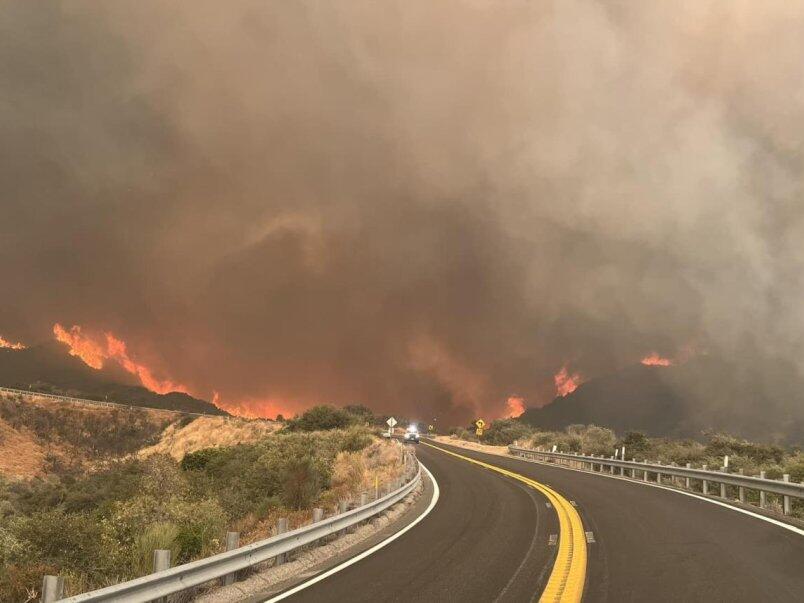Physical Address
304 North Cardinal St.
Dorchester Center, MA 02124
Physical Address
304 North Cardinal St.
Dorchester Center, MA 02124

On September 7, residents from hundreds of homes located near the San Bernardino National Forest in Southern California were issued mandatory evacuation orders as the Line Fire rapidly expanded. The fire, which began late Thursday evening, showcased alarming growth, forcing officials to take immediate action.
In response to the escalating situation, California Governor Gavin Newsom declared a state of emergency for San Bernardino County. In his announcement, he revealed that the state had obtained a Fire Management Assistance Grant from the Federal Emergency Management Agency, aimed at ensuring essential resources are available for firefighting efforts.
Law enforcement cited an “immediate threat to life” as they ordered evacuations in various communities. The San Bernardino Sheriff’s Office specifically listed Running Springs and Arrow Bear Lake as areas under evacuation. This directive came just a day after parts of Highland, California, were also affected as the wildfire drew nearer to the city of San Bernardino.
As the situation evolved, authorities reported that the Line Fire had spread over 17,459 acres by Sunday morning, with containment efforts yielding no progress at that time. The fire had grown significantly overnight, when its size was noted at approximately 7,122 acres.
In conjunction with fighting the fire, highways, including Highway 330, as well as other roads in the vicinity were closed, complicating access for emergency personnel. According to CalFire, a total of 35,405 structures were at risk, encompassing both residential properties and commercial buildings. Fortunately, no damages had been reported up to that point.
Injuries were reported among both fire personnel and civilians, totaling three. As firefighting efforts continued, approximately 628 personnel were on the scene, supported by 65 engines, two helicopters, three bulldozers, and one water tender.
CalFire noted that smoke has posed significant challenges for aircraft, hindering aerial access to certain parts of the fire. The agency’s situation summary also highlighted limited resources and logistical support as ongoing obstacles in their efforts to bring the fire under control.
Weather conditions were expected to further complicate firefighting endeavors. A combination of hot, dry air and thunderstorms was predicted to present additional challenges in the upcoming days. Southern California was under excessive heat warnings, with September 7 marking a day of record-high temperatures spanning the region. Reports indicated dangerously high temperatures between 102 to 110 degrees Fahrenheit across areas such as San Bernardino and Riverside counties.
The Line Fire was primarily advancing in a north-northeasterly direction, prompting major concerns regarding its eastern flank, where containment appeared most precarious. The western edge of the fire was approximately 12 miles east of the San Bernardino International Airport, increasing the urgency of firefighting efforts.
In light of the situation, the California Department of Forestry and Fire Protection indicated that resources were continuously deployed from across the state. Fire crews had managed to make some headway during the night due to higher humidity levels and the use of water-dropping helicopters. Despite the challenges posed by steep terrain and restricted access to some fire-affected areas, crews received support from both fixed-wing and rotary aircraft.
As the battle against the Line Fire continues, authorities remain vigilant in their efforts to protect life and property. With ongoing support from various state and federal agencies, firefighters are hopeful for progress as they face challenging conditions in the days ahead.
Source: UPI



